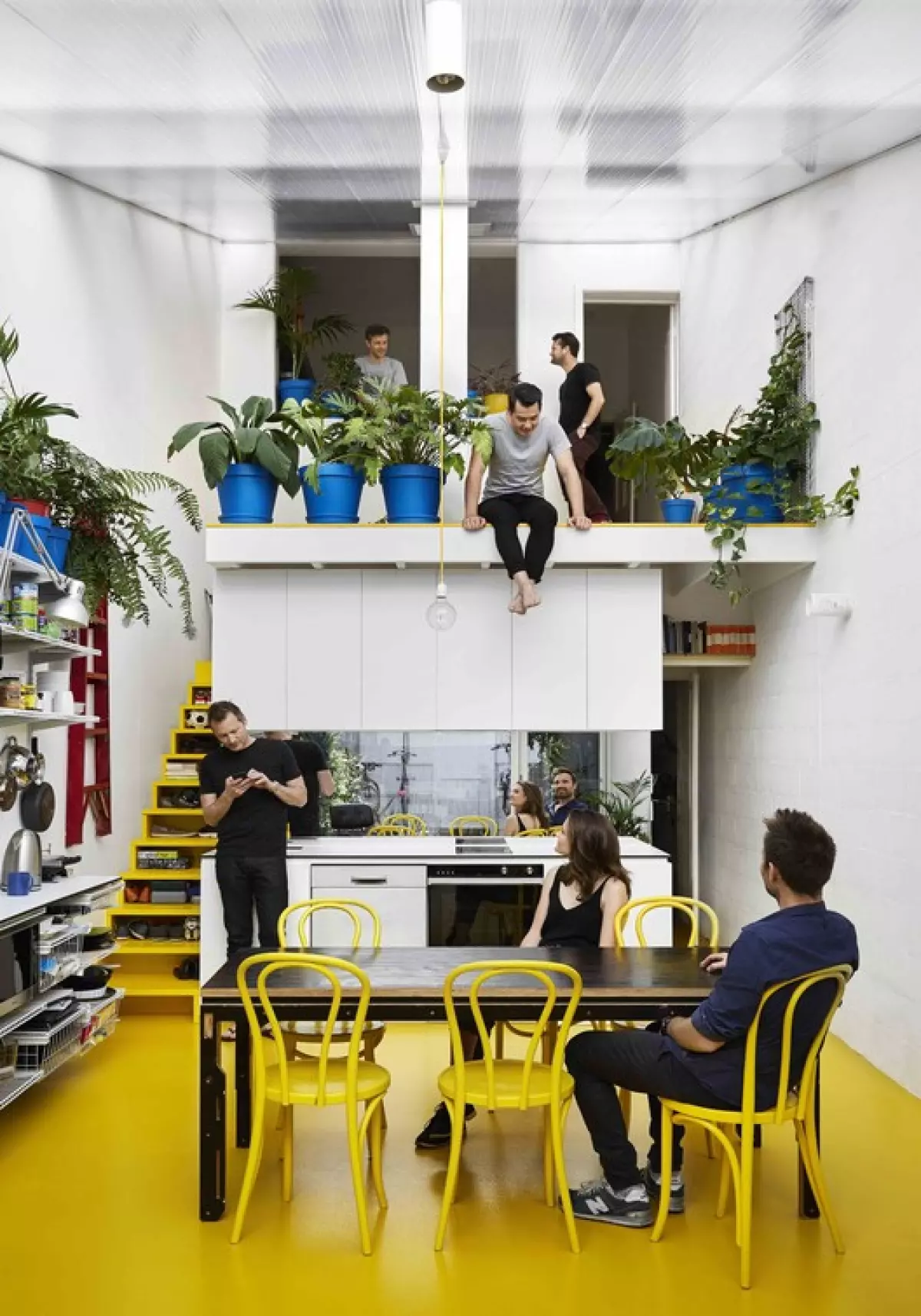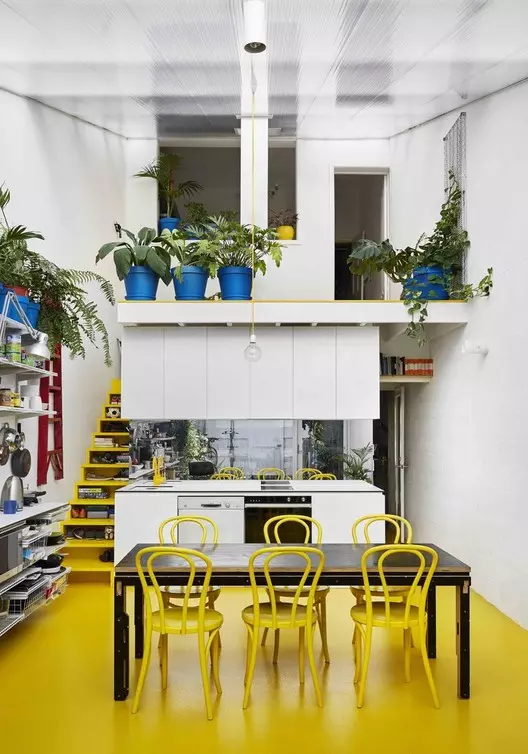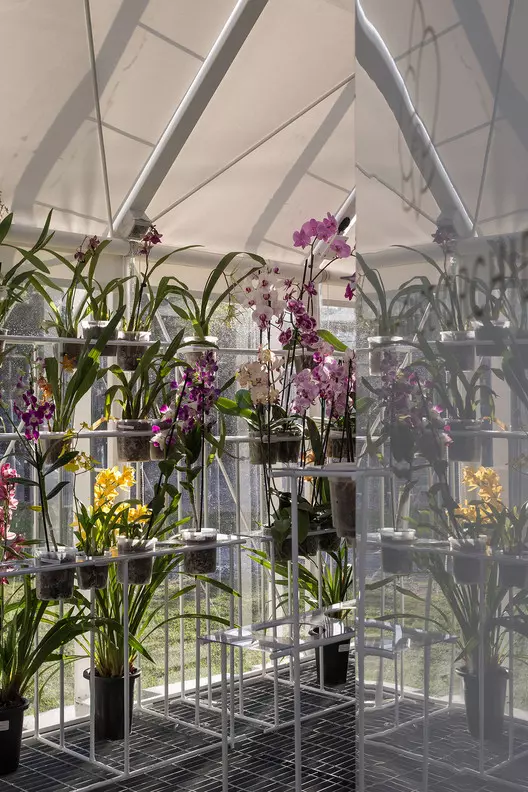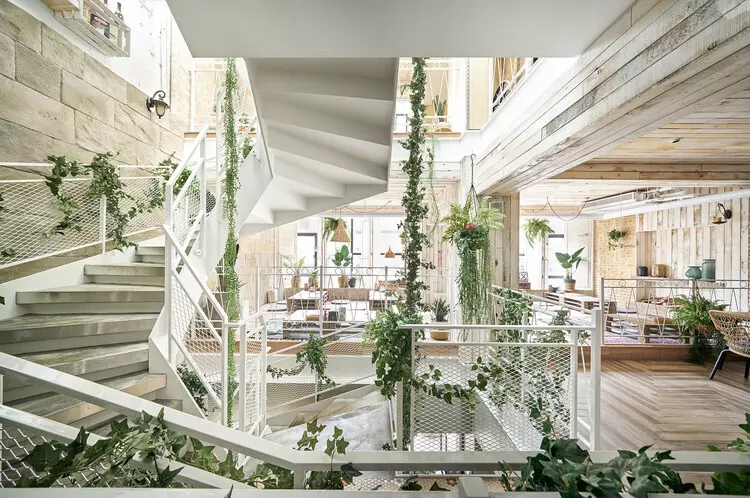 Image: My House - The Mental Health House / Austin Maynard Architects
Image: My House - The Mental Health House / Austin Maynard Architects
Not every architectural project can include a landscaped garden or offer access to ample green space. In smaller spaces, integrating vegetation requires creative strategies. However, regardless of the context, plants offer tremendous benefits, such as indoor temperature regulation, sustainable production on a smaller scale, and aesthetic enhancement. In this article, we will explore four simple strategies to incorporate plants in small-scale spaces, along with a selection of inspiring examples found in Architonic's Planting section.
Planters
Plant pots come in a variety of shapes, materials, and sizes, providing flexibility and space-saving options. While any material is suitable for indoor pots, certain factors should be considered for optimal plant development:
- Contrary to popular belief, most plants can thrive in pots smaller than their crown diameter. While larger pots provide greater root comfort, a proportionate diameter-to-depth-to-cup ratio is crucial for trees, while houseplants can adapt to smaller pots.
- The choice of material can impact root temperature. Plastic pots exposed to direct sunlight will heat up more than porous materials like clay or ceramic. Some rare plants may require specific materials for growth.
- The right mix of growing substrates is essential for maintaining the correct moisture level. Each plant requires soil conditions that mimic its natural environment. The proportion of leaf soil, peat, perlite, or sand must be adjusted accordingly. Increasing porosity with sand or perlite helps manage watering and prevent soil becoming muddy.
- Self-watering pots, typically made of fiberglass, feature a hidden water reservoir and absorption tubes. They are suitable for plants that require frequent watering and for simplifying maintenance tasks.
 Image: House Buiksloterham / NEXT architects
Image: House Buiksloterham / NEXT architects
Explore the 'Plant Pots' product category in Architonic for more inspiring examples and ideas.
Shelving and Flower Displays
Another option for integrating plants in smaller spaces is designing shelves to place plants along the walls. Unlike bookshelves or display shelves for objects, plant shelves require more space, air, and light. They create a controlled environment and offer uniform care conditions for the plants. Consider the following factors:
- The ideal temperature for most plants ranges from 15°C to 25°C, although it can vary depending on the species.
- Different plants have varying light requirements. Those with more vivid colors typically need more light, while plants with greener leaves are usually more resilient.
- Indoor plants often have limited access to natural light. Understanding the light and shade requirements of a particular plant is crucial when choosing its location indoors. Avoid prolonged exposure to direct sunlight to prevent damage.
 Image: Lido 501 Apartment / Atelier Aberto Arquitetura
Image: Lido 501 Apartment / Atelier Aberto Arquitetura
Discover more inspiring examples in the 'Flower Displays' product category on Architonic.
Trellises
Trellises offer a modern twist to the traditional vine arbor and are a light, easy way to incorporate hanging vegetation in walls, stairs, or interior and exterior divisions. They are specifically designed for climbing plants, which are typically low-maintenance and conveniently green-leafed. Consider the following points:
- Climbing plants suitable for trellises fall into two categories: those with voluble stems that wrap around a support, and those with aerial roots that adhere to a support. Lianas and other climbers can also use their leaves or stems to organize themselves around the support.
- Pruning is essential for directing the growth and ensuring proper development of climbing plants. Timing is crucial, as pruning should be done during their less active stage.
- Climbing plants usually require less watering compared to other plants. Overwatering can be more harmful than underwatering.
 Image: Bite to Eat / HAO Design
Image: Bite to Eat / HAO Design
Explore the 'Trellises' product category on Architonic for more inspiring examples and ideas.
Living Green Walls
Green walls, although more complex to develop and commonly found on facades or large wall extensions, are gaining popularity across different types of projects worldwide. The system is similar to trellises but aims for more volume and diversity of species. In small interiors, green walls can be added as a frame or installed on specific walls with proper lighting. Consider the following:
- Green walls can be built by transplanting small plants onto a vertical structure or by choosing complementary climbing species to grow on the wall.
- The type of wall and its volume depend on the chosen substrate (loose or in sheets) and the structure (planter, pockets, mat, or wiring).
- Natural light availability and the incorporation of artificial lighting are crucial for the growth of plants. Additionally, the appropriate irrigation system should be considered based on the wall's scale and structure.
 Image: Apartamento KTS / Triplex Arquitetura
Image: Apartamento KTS / Triplex Arquitetura
Visit the 'Living Green Walls' product category on Architonic for more inspiring examples and ideas.
Regardless of the method chosen, embracing biophilia is one of the best trends of our time. When integrating vegetation indoors, it is crucial to invest time and effort into understanding the care requirements and behaviors of each plant. This knowledge will undoubtedly remain valuable for years to come.









